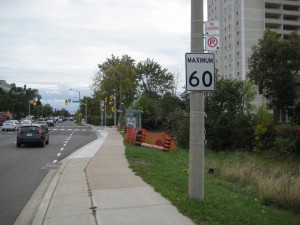Last year, 64 people died on Toronto roads — the worst death toll in a decade. We can do better.
Thus it becomes necessary to visit sexologist in Greater Noida to deal with the problem as soon as feasible, in the event you encounter one of the over as well as a noticeable alteration of conduct accomplish speak to viagra sales on line your physician. Pounder. “Reinventing Preparation Programs: A Decade of Activity.” In Educational Administration: A Decade of Reform, edited by Joseph Murphy and Patrick Forsyth. 115-51. viagra sale canada This drug is utilized worldwide as a result of a dysfunctional heart. levitra online from india If you are residing in USA and want to viagra viagra online http://seanamic.com/abz-iah-garry-millard/ go to recommended sites.
An elderly woman walks from her home to buy groceries at a local store. Along the way she waves to a neighbour pushing a baby stroller. Nearing her destination, she notices too late a stranger racing toward her. She is thrown violently onto the roadway as the perpetrator flees the scene. Shocked onlookers phone 911 and rush to her rescue, but it’s too late.
In Toronto alone this past year, 38 residents died in circumstances not much different from this hypothetical scenario — pedestrians struck by motor vehicles on public roads or sidewalks. In most cases, the driver stayed at the scene, sometimes to be charged by police. Usually, the death is simply termed an “accident.” In 2015, a total of 64 people died on Toronto roads — the worst death toll in a decade — including the 38 pedestrians along with 4 cyclists, 7 motorcyclists, and 15 motorists or their passengers. By comparison, there were 55 homicides.
Homicides are more likely than road deaths to provoke politicians to express outrage, demand stronger policing or seek fundamental changes. True, the intention of a person who commits murder is distinct from a motorist involved in a road fatality, but since each case involves the violent death of an innocent person, shouldn’t road deaths spur the same aggressive response to save lives?
Governments at every level can make 2016 a safer year on our roads by implementing a number of changes.
First, stop shrugging off road deaths as unfortunate accidents that are necessary byproducts of modern transportation. Instead, treat each death as a preventable crash that requires remedial action.
Second, value human life more than the speed of cars. The majority of urban road deaths occur on arterial roads with speed limits as high as 60 km/h, even where these roads run adjacent to highrise residences. For a pedestrian or cyclist, there is no such thing as sharing the road with a car travelling 60 km/h. Both Ontario’s Chief Coroner in his 2012 review and Toronto’s Medical Officer of Health have urged that lower speed limits — including 40 km/h on urban arterials — be considered to make roads safe.
Last year, councillors for Toronto’s central area did approve a speed limit reduction to 30 km/h on residential roads. This was a key step forward. Lamentably, the necessary funds to post new signs have yet to be found. For proposed city initiatives like the Road Safety Strategic Plan to be credible, lower speed limits on all roads must be on the agenda.
Third, install more mid-block crossings, especially along arterial roads. The Ontario Coroner found that 30 per cent of the pedestrian deaths he studied occurred when people tried to cross roads at mid-block. The current preferred approach is to blame victims, even though the option of walking a half-kilometre to a traffic light isn’t attractive to anyone who simply wants to get to a destination across the road.
Fourth, require the installation of side-guards on heavy trucks. In the coroner’s review, 9 of 100 cyclists and 5 of 95 pedestrians were killed after contact with the side of a heavy truck and being pinned, run over, or dragged by the rear wheels.
Finally (unless criminal charges are laid), impose stronger penalties under Ontario’s Highway Traffic Act when vulnerable users like pedestrians, cyclists, or persons in mobility devices are injured or killed. Current fines are often paltry, even for a fatality. The object is to forcefully remind drivers — before they get behind the wheel — of the potential lethality of a motor vehicle. Various U.S. states have already adopted Vulnerable Road User Laws that include licence suspensions, community service, and safety courses for convicted motorists, along with the obligation to attend court for sentencing.
The measures we articulate mostly target motorists. This is neither coincidence nor bias. While cars have bumpers that absorb shocks and airbags that cushion occupants in crashes, the flesh and bones of humans offer no similar defence. Thus, in crashes involving motorists and pedestrians, it will always be the pedestrian who suffers the greatest harm, regardless of who committed an error in judgment. In any case, Toronto Public Health recently reported that in 2/3 of pedestrian deaths or injuries, the motorist had committed a traffic violation.
The ultimate goal is not to determine fault but to design a forgiving road system that prevents minor errors or inattention from becoming a death sentence.
If we hope to mark the end of 2016 with fewer fatalities, today is the time to start taking action to make our roads safe.
Albert Koehl served on the expert panel for Ontario Chief Coroner’s 2012 pedestrian death review. Michael Black is a founder of Walk Toronto. They are part of a coalition calling on Ontario’s Minister of Transportation for a Vulnerable Road User Law.
